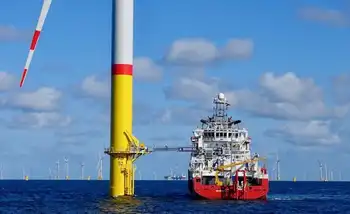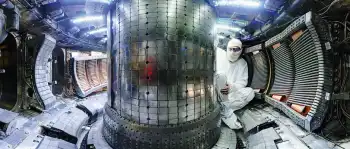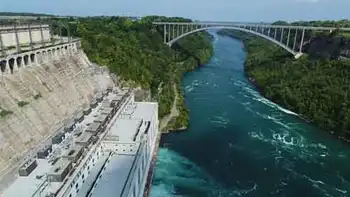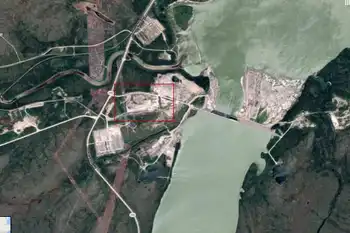Rust and Neglect Cited at Japan Atom Plant
"To put it bluntly, it was extremely thin," Shoichi Nakagawa, Japan's minister of the economy, trade and industry, said recently after touring the power plant, in Mihama, about 200 miles west of here. "It looked terrible, even in the layman's view."
Although the carbon steel pipe carried 300-degree steam at high pressure, it had not been inspected since the power plant opened in 1976. In April 2003, Nihon Arm, a maintenance subcontractor, informed the Kansai Electric Power Company, the plant owner, that there could be a problem. Last November, the power company scheduled an ultrasound inspection for Saturday.
"We thought we could postpone the checks until this month," Akira Kokado, the deputy plant manager, told reporters at Mihama. "We had never expected such rapid corrosion."
But recently, four days before the scheduled shutdown for the inspection, superheated steam blew a two-foot-wide hole in the pipe, scalding four workmen to death and injuring five others seriously. The steam that escaped was not in contact with the nuclear reactor, and no nuclear contamination has been reported.
Initial measurements showed that the steam had corroded the affected section of pipe from its original thickness of 0.4 inches to 0.06 inches, less than one-third the minimum safety standard. Kansai Electric said in a statement that the pipe "showed large-scale corrosion."
"We conducted visual inspections but never made ultrasonic tests, which can measure the thickness of a steel pipe," said Haruo Nakano, a Kansai Electric spokesman.
In response, Japan's nuclear and industrial safety agency ordered ultrasound inspections at four other power companies that own nuclear plants with the same type of pressurized water reactors. The inspections will involve nearly half of Japan's 52 nuclear power plants.
The Kyodo news agency reported recently that corrosion problems had prompted operators in recent years to replace the steam pipes at 16 plants of a design similar to that of the plant at Mihama.
With television news helicopters swarming over the Mihama plant and government officials were quick to promise that a full investigation would take place.
"We must put all our effort into determining the cause of the accident and to ensuring safety," Prime Minister Junichiro Koizumi said. He added that the government would respond "resolutely, after confirming the facts."
Recently, the police opened an investigation to determine why 221 workers were in the reactor facility at the time of the accident. The subcontractor has said they were moving in equipment and testing materials in preparation for a shutdown and a subsequent inspection.
Kyodo reported that investigators believed that the company might have neglected safety standards by allowing workers to prepare for an annual inspection while the plant was still running. But government leaders also tried to bolster flagging public support for nuclear power.
"Nuclear power has a significant impact in our lives," Mr. Koizumi said. "We have to pay close attention so that our lives won't be affected by this accident."
Japan planned to build an additional 11 reactors in this decade, increasing the nation's reliance on domestic nuclear power to 40 percent of its electricity needs. Already slowed by local opposition, that program may now be stalled by the accident, the most deadly in the history of nuclear power in Japan.
"In Japan it's virtually impossible to build new nuclear facilities now," Asahi Shimbun, a liberal newspaper, said in a recent editorial. "But facilities are wearing out, and there are worries about increasing problems with corroding pipes, rupturing valves and the reactor core."
Nihon Keizai Shimbun, a business daily, worried that the accident could undermine public support in Japan for nuclear power.
"We must find the cause of the accident and urgently come up with measures to prevent such an accident from happening again," the newspaper editorialized. "This accident seriously damaged public confidence in nuclear safety."
Yomiuri Shimbun, a conservative newspaper, warned, "Care must be taken not to overemphasize the dangers involved in the operation of nuclear power stations, which could lead to an overreaction."
Japan has the world's third-largest nuclear power industry, after the United States and France.
Mainichi Shimbun, a liberal newspaper, said further expansion of nuclear power in Japan was now in play. It said in an editorial, "As we investigate the cause of the accident, the outcome could determine the course of Japan's nuclear energy policy."
Related News
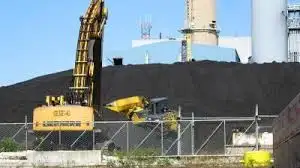
New England Emergency fuel stock to cost millions
CONCORD - Electricity ratepayers in New England will pay tens of millions of dollars to fossil fuel and nuclear power plants later this decade under a program that proponents say is needed to keep the lights on during severe winters but which critics call a subsidy with little benefit to consumers or the grid.
Last week the Federal Energy Regulatory Commission said ISO-New England, which runs the six-state power grid, can create what it calls the Inventoried Energy Program or IEP. This basically will pay certain power plants to stockpile of fuel for use in emergencies during two upcoming winters as…


